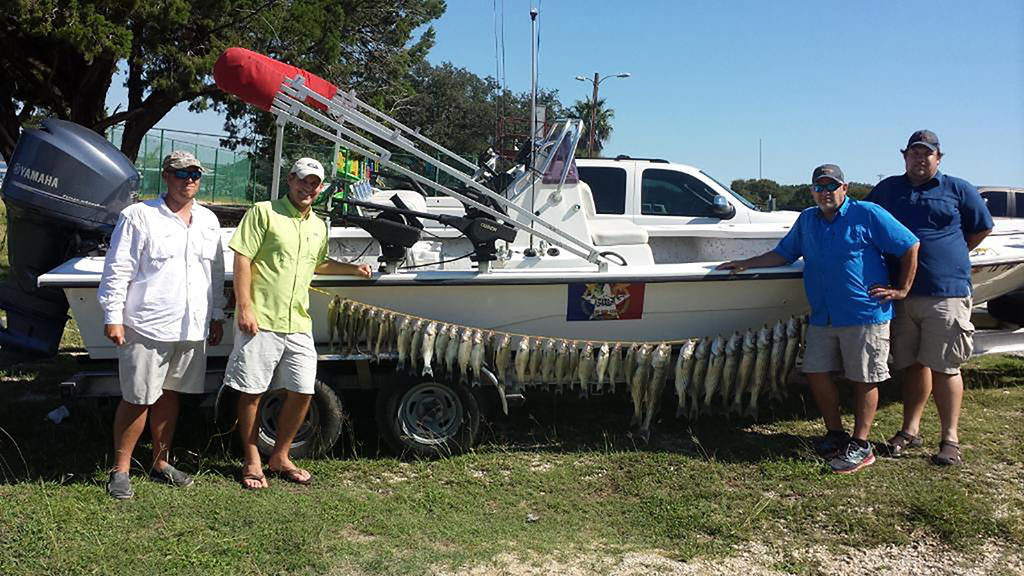by John Jefferson
This started when a friend sent me an image of a young man holding what the accompanying caption said was a 23-pound striped bass caught in Canyon Lake. The fisherman was not identified.
I contacted the usual suspects when I have a mystery regarding Canyon. None of them knew who he was. Next, I called the TPWD District Inland Fisheries biologist, Patrick Ireland, figuring the hot-gossip circuit would have surely reached his office. After all, that was a big fish, and something newsworthy.
Ireland hadn’t heard about that but told me of two other Canyon Lake striper chasers that had caught several larger stripers. In trying to locate them, Ireland referred me to a Canyon fishing guide named Captain Steve Nixon. That was pure gold.
Captain Steve began fishing Canyon Lake over 50 years ago. Cowboys used to say they were horseback riding in the saddle before they could walk, and it sounds like Nixon was fishing there before or about the time he started school. He guides anglers for practically all game fish species in Canyon Lake, except the large stripers. He doesn’t take clients for them, although he is a popular guide for other species. But he knows plenty about large striped bass.
He’s boated 25 of them over 20-pounds. When asked if it was too late this year to fish for them, he readily replied, “No.”
“Some of my best catches have come in June,” he explained. The tactics change, however. March and April are spawning season and a productive time to fish. But as the weather warms up, striped bass go deeper.
“When they get down deep, say around 40-50 feet deep, it’s easy to locate a school of large fish,” he told me. “They’re bunched up down there.”
But last week, with all the rain and cool temperatures, stripers may not be as deep yet as they will be later. Topwater lures, though, might not be as effective as they were earlier in the spring. I looked back at the picture of the 23-pounder that started all this, and it arrived in late March or early April.
I asked Captain Steve what he uses for bait? Shad or lures?
“I don’t use live bait unless I’m guiding people whose skills dictate it,” he replied. “I prefer jigging spoons that will get down deep. Or “striper jigs” or sometimes even saltwater swimbaits.”
He acknowledges the zebra mussels have contributed to a reduction in fish populations. He is still able to put clients on white bass and crappie, but the white populations have declined to the point that it’s now a matter of catching a handful when previously it was common to limit out.
Dozens of lakes are now infested with zebra mussels, and a number of others have shown signs of coming infestations. Shad and zeebs both feed on plankton and the mussels are out-eating the shad in Canyon, leading to a food shortage for the once-popular bait fish.
Without adequate food, you know what happens.
JJ





